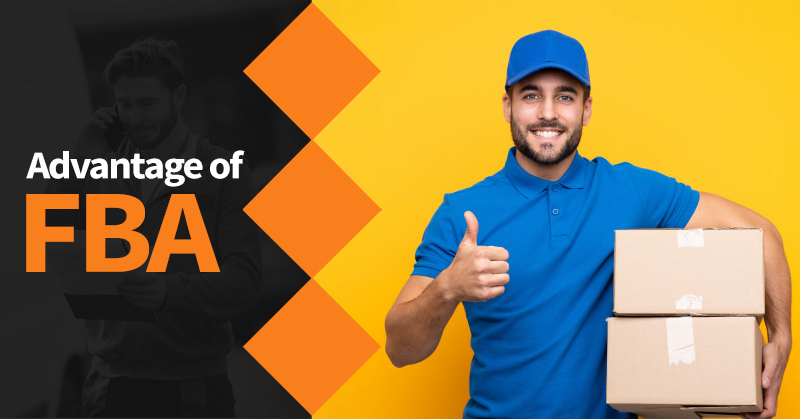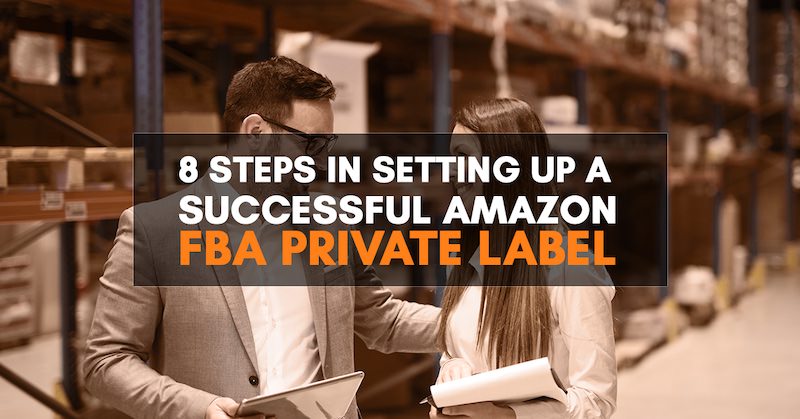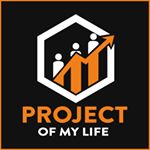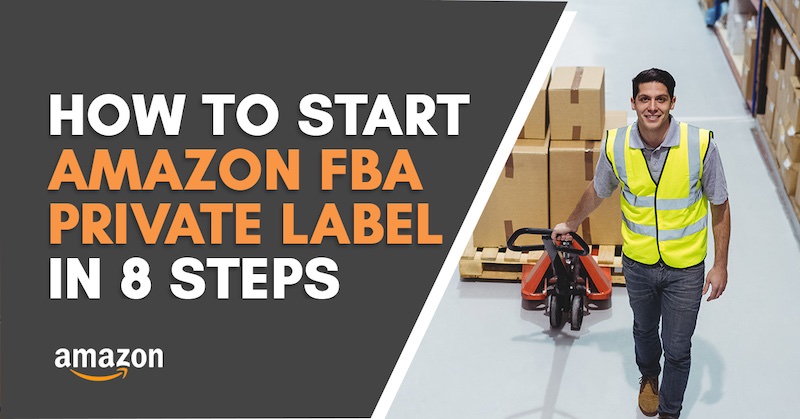Starting a successful Amazon FBA private label business can be intimidating, especially your first time. But the good news is, it isn't as difficult as you might think because I am here to make it easy for you and start an Amazon FBA business, particularly a private label. I have researched the internet and gathered some of the gurus' best strategies to succeed. By the end of this post, you should be able to set up your own Amazon private label brand successfully.
What Is Amazon FBA Private Label
Before you learn how to start an Amazon FBA business, you should know what types of Amazon FBA business models are there. There are three types of Amazon FBA ( Fulfilled By Amazon) sellers on the platform, and most people tend to confuse these. However, I will look at how each differs and why I recommend choosing Private Label as your Amazon FBA strategy. As stated earlier, there are three types of FBA business on Amazon:
1. Retail Arbitrage
With retail arbitrage, what happens is that you visit your local stores, such as Walmart or Target. Then, you purchase items– usually on clearance, and then you get to resell them on Amazon for profit.
2. Wholesale
With wholesales, you get to buy products in bulk directly from the supplier or the distributor of an already well-known name brand product like Gillette, Samsung, Crest, and many others. So, the idea here is to buy the product in bulk at a low price and then flip them on Amazon at a higher price to make a profit.
3. Private Label
With private labels, you research existing products on Amazon that are profitable and in high demand. After your research, you will then contact a manufacturer–usually from China. They will help you make this product under your label or brand. So, with this, you get to create and own the brand. So, what is Amazon FBA private label? It is a business model selling on Amazon, where you will ship your products and store them in Amazon Warehouse at fees. Then Amazon will pick, pack, and ship your product to the customers. You own your brand name, and only you can use that name on the products, and only you can sell that brand name product unless you authorize someone else to sell your brand name product or use your brand name in their products.
Advantages Of Private Label

There are a few reasons and advantages of choosing private label model than others:
i. You Are The Boss:
Firstly, I recommend starting your own Amazon FBA private label because you get to be the boss. Moreover, you get to control the whole process, from negotiating the price with the manufacturer to the product's outcome. It also gives you the flexibility to add your creative ideas on what you want the product or its packaging to look like. Being the boss from the beginning to the end isn't something you can do regarding retail Arbitrage or Wholesale.
Usually, you cannot negotiate the wholesale or retail prices with the product manufacturer with these business models. The prices tend to be fixed. Also, you get to determine your profit margins by deciding how much you want to buy the product from the manufacturer/supplier and how much you want to sell it to the consumer. However, this isn't the case for wholesale or retail FBA since manufacturers determine its selling price. You cannot change the product's name or how you want it to look (like the product itself or the packaging).
ii. Your Competition Is Limited
There have been increasing official main brand stores on Amazon selling their products directly to the consumer. This tends to put most wholesalers and retailers at risk since they compete with those who manufacture the product they are selling. However, with Amazon private labeling, your only competition is the competitors in your niche. But the good thing is, they cannot use your brand name. When you list your product on Amazon, Amazon gives a unique ASIN – an ASIN consisting of 10 alphanumeric combinations that uniquely identify products sold on Amazon.
So, with Amazon FBA private label, you do not get to compete for an ASIN since your product is unique. Instead, you are assigned your ASIN for each product. Even though you might be selling the same product as your competitors, since the packing and brand name are different from those of your competitors, Amazon will assign you a unique ASIN. However, with Amazon wholesales and retail FBA, the sellers compete for the same ASIN if they sell the same name-brand product.
iii. Logistic Benefits
Amazon FBA's private label business model allows you to store your product on Amazon Warehouse at cost so that you don't have to rent a warehouse for that. Besides that, Amazon will fulfill your order and ship the product to the customers. You don't need to hire employees to do these tasks. Find and hire employees can be very difficult here with so many regulations to comply with if you have employees.
iv. Benefits Over Other Competitors
The benefits of FBA are even bigger when talking about competitors. Your product listing will have a “Prime” badge. It means prime member customers will get 2-day free shipping, and non-prime member customers will still get 2-day free shipping (not guarantee) or more if they purchase over $25. Amazon will push or rank better product listings with a prime badge on the first page. This is huge because 80% of sales that happen on Amazon are from the first page.
How To Start Amazon FBA Private Label

Now you know why choosing Amazon FBA Private label business compares other models. Next, let's take a look at how to start Amazon FBA private label business. Before I start, I assume you have already set up your Amazon Seller Central account. It would be best to have the account set up first before selling your private label product on Amazon. You want to make sure you do that first and watch my video here for those of you who don't have it yet or don't know how to set it up. It will guide you step by step. With that being said, let's dive into the steps to start your Amazon FBA private label:
Step 1: Product Research
This very first step is very important, if not the most important step. Do product research and finding the right product can set your brand's tone and business. You need to find a profitable product, high demand, fewer competitors, maybe your passion product, and the importance of finding the product you can differentiate or make better. However, some of the most common questions asked by beginners: how can I find them, how do I know which product has demand, how do I know which product to sell, and the questions go on and on.
Researching and finding products that sell can be difficult if you do not have the skills, knowledge, and tools. Even if you can find a product that sells, it may not be easy to prove if the product will be able to sell or not. But do not worry– I got your back. If you are a beginner, I highly recommend you get yourself a product research tool– even those with experience use product research tools. Product research tools can help take a lot off the plate by eliminating the guess of launching a product and decreasing your chance of not selling well. Not only that, but product research tools can also help you do the following:
- It can analyze what your competitors are selling.
- It can help you estimate how much profits you make and the expenses you should expect.
- You can compare products in markets like Europe, America, and Asia to determine the hottest selling products.
- It can help you determine how many products you need to sell (8 days CPR) for your product listing shows on the first page.
What is the best product research tool?
There are tons of product research tools out there, but here are a few tools I recommend to find private label products:
Things to consider when doing product research:
- Choose products that are small in size and lightweight. Doing this reduces how much Amazon charges you for shipping. This is what most guru teaches, but I think this was old school. It is true the size and weight will reduce the profit margin. It would be best if you considered it, but the most important thing is to look at the overall profit margin of that product. If it is greater than a 30% profit margin, go for it.
- The product price is $30 and above. Why? Because you want to have at least $10 profit per product and/or 30% profit margin. It means if the product price $30, you want your product landing cost + FBA fee + other fees, no more than $20
- Select products that people can use year-round. Do not select seasonal products such as back-to-school products or Christmas products.
- Make sure the product is hot selling or is in high demand.
- Ensure the product is easy to manufacture, easy and simple, non-electric, and non-glass or unbreakable.
Keeping these in mind and using your product research tool should help you find winning products.
Step 2: Get A Logo and Brand Name
After you have the products, you want to sell a brand. You want to make sure that you sit down and brainstorm on your brand name and the logo. One of the best ways to get a logo is to use Fiverr to get a freelancer to create a logo for your brand. If you want to create a logo yourself, you can go to Brandcrowd. For a Brand Name, you can use Namelix to find the brand name you like and check at USPTO if the brand name can be trademarked.
Tips: find a brand name that is fanciful and unique. Don’t use the brand name associated with the product niche. Choose the brand name that can apply to different product niches. Another thing that needs to consider is to check the domain and social media availability. You can check this on Namechk and if they are available. You need to register your brand to those domains and social media quickly.
Step 3: Find A Manufacturer or Supplier
After you've figured out your logo and brand name, you want to find a manufacturer or supplier. There are many sites and marketplaces where you can find manufacturers or suppliers to source your product. Here are a few I recommend:
These platforms offer you an online directory of suppliers from which you can source products at a way cheaper cost. It is important to note that this isn't the stage you would want to order tons of products to the Amazon fulfillment center. At this stage, you want to make sure that you sample the products. For beginners, I recommend you try out DHGate or Alibaba. Here are a few tips you want to keep in mind to ensure that you do not get scammed when you start your Amazon FBA business:
- The first step will be to set up an account with any of the platforms.
- You want to communicate with manufacturers that have a rating of 4 stars and above.
- Secondly, you want to make sure that you communicate with three or more manufacturers.
- Find Manufacturers who have been Verified and have Trade Assurance
- Pay with Credit Card or Paypal for extra protection
How to communicate with the manufacturer or supplier?
- Ask if the manufacturer has a different range of similar products. You can get a better idea of which model that you or the manufacturer think is better or superior, or premium.
- Their minimum quantity price, 2nd quantity price, 3rd quantity price, 4th quantity price, etc.
- You want to ask them if they can customize the products with your logo and brand names. Ask first if you can get free customization. If not, ask how much they would charge.
- How long it will take them to complete an order.
- You want to make sure that you order the samples to your home address to review each product yourself.
- Once the sample arrives, you want to look at each product from each manufacturer, and then you want to choose the one with the best product quality and price point.
- Do Not Order In Bulk Without Taking A Sample.
Step 4: Calculate Your Profit Margin
Once you've seen the samples and you've confirmed that the products are of the quality you want. Then you want to check your profit margins. To do this, you want to utilize the Fulfillment by Amazon Revenue Calculator. Before using the revenue calculator, you must have an Amazon Seller Central account, which I guess you already have. The revenue calculators give you an estimate of all the fees Amazon will charge for your product and the profits you can expect to make. Here is an overview of how much Amazon charges you for each product you sell. For each product listed on your store, Amazon will charge:
- Amazon referral fee between 6%-20% depending on your product category, but on average around 15%.
- FBA or fulfillment fees, depending on your product size and weight between 10%-30%, but on average around 18%.
- Monthly Storage fees depend on product size and quantity or in size how many cubic feet are needed to store all your product. I would say around 2% – 8% or, on average around 4%.
So, you want to make sure that the profit you make is reasonable. This is why I recommend you sell products that you can list for $30 and higher to maximize your profit margin.
Step 5: Choose Your Fulfillment Option
Once you like the product and think the profit margin is good, the next step is to choose how you want your product to be shipped to your buyers. You can either do it yourself or have Amazon do it for you with their FBA program. Well, I highly recommend you sign up for the Amazon FBA program. With the Amazon FBA, you need to have the supplier ship the products to an Amazon fulfillment center. Once the shipment arrives, Amazon will store the product in their warehouse. When an order is placed, Amazon will handle the shipping and delivery. You do not want to take care of your logistics; you want to ensure that you take full advantage of the Amazon FBA program.
Step 6: Order from the manufacturer
Once you have found how to deliver the products to your buyers, the next step is to order in bulk from the supplier. Usually, it will take the supplier a month or less to manufacture the products and an extra week to deliver the Amazon fulfillment center's products. When ordering, you want to make sure that the supplier:
- You discuss the type of packaging you prefer
- Ensure that the supplier slaps your logo and brand name on the packaging.
Step 7: List Your Product And Optimize Your Listing
Once you have successfully ordered the product, you want to ensure that you have the inventory listed on your Amazon store two weeks before the product arrives at the fulfillment center. A good listing triggers a potential buyer to make a purchasing decision in a matter of seconds. To do this successfully, you want to keep the following in mind:
- Use high-quality images for your product listing.
- Be sure to include the name of your brand when typing in the product name. For example, if you sell jugs and your brand's name is “Kelgo”. You can list your product with the product name– “Kelgo Jugs.”
- Show your logo on your product or your packaging.
- Keywords optimized on your Title, Product Feature, Description, and back end. But Do not stuff keywords because Amazon will penalize you.
- Add detailed product descriptions for each listing. Do not just list the specs.
- Add an FAQ section for your listing.
Step 8: Launch Your Product
This step is crucial because you want to rank your product on the first page of Amazon. 75% of the sales happen on the first page when people buy on Amazon. How do you do this? There are several things you can do inside amazon:
- Amazon PPC / Amazon Sponsored Ads
- Giveaway
- Discounted price
- Coupon Code
- Early Reviewer Program
You can also promote your product outside amazon:
Doing aggressive promotions inside and outside amazon will rank your listing faster and get traction from Amazon A9 Algorithm. Besides that, you will get more reviews since more people are buying your product. You will have more chances to get reviews.
Step 9: Learn More And Keep Updated!
While these are all, you need to know to have a successful store. Some more secrets and tips can help you stand out. That is why I have gathered my years of experience (both my failures and success) to help you stand out from the crowd. It will take many trials and errors to start making a profit with your store. Therefore, I am here to eliminate all the guesswork. But Amazon is always changing, and you will need to keep updated at all times. You will need to continue to learn how to sell on Amazon FBA. I continue learning to keep myself updated.
Conclusion
An Amazon FBA Private Label has many advantages over the other types of FBA business. As a small business owner and entrepreneur, this is already a very appealing venture. The unique ASIN is provided to FBA Private Label listed products also gives your product security and more edge over your competitors. Indeed, being a Private Label seller in Amazon has huge advantages. Follow the steps listed above, and you are on your way to having a successful online business on Amazon.
You can also read my other blog about “Best Product to Sell on Amazon FBA,” so you have more ideas for what products you want to sell. Do you still need more guidance? Or are you ready to start Amazon FBA's private label business? Perhaps you already have one. Do you want to scale your business? You can join Amazing Selling Machine. It will teach you step-by-step how to start Amazon FBA private label business from A to Z and answer any questions you have regarding Amazon business in general. Most importantly, it will help you build your Amazon business from the beginning until you have successfully built your business.
“Remember, the journey of a thousand miles begins with one step (or in this case, eight).”



